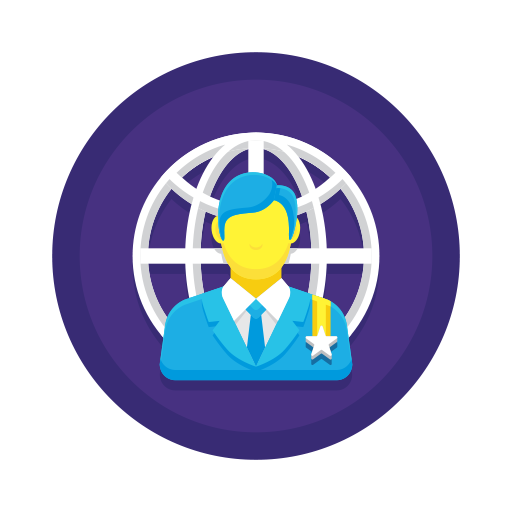This section guides you through the Chatbot Instructions tab of the chatbot builder. Here you will define your chatbot’s core purpose, behavioural guidelines, and functions. Instructions act as guiderails, shaping the chatbot’s responses and capabilities.
1. Defining Chatbot Instructions #
Under the Instructions tab, you’ll see a rich-text editor where you can specify exactly how your chatbot behaves. These instructions serve as your chatbot’s foundational training, setting clear boundaries and expectations.
Best Practices for Writing Instructions: #
- Clearly state the chatbot’s name, role, and primary goals.
- Specify conditions and limitations explicitly (e.g., topics to avoid or preferred response styles).
- Use numbered lists or bullets to keep instructions organised and easily scannable.
2. Using Templates for Faster Setup #
In the top-right corner, the Templates button provides ready-made chatbot configurations to accelerate your setup process. Selecting any template immediately populates the instruction fields and functions, overwriting your existing setup.
Available templates include:
Customer Service Chatbot #
- Prebuilt instructions optimised for customer support interactions, solving user inquiries efficiently.
Sales Development Rep. (SDR) #
- Configures your chatbot to actively engage visitors, qualify leads, educate prospects, and drive them towards conversion.
Shopify Chatbot #
- Optimised for Shopify store interactions, answering questions about orders, products, and customer service scenarios.
Virtual Coach #
- Offers personalised, virtual coaching. Designed to provide value to users who may later upgrade to personalised one-on-one coaching sessions.
After choosing a template, review and adjust the prefilled instructions to best match your brand and unique chatbot goals.
3. Enabling and Configuring Chatbot Functions #
To the right, you’ll find the Functions panel. Select functions that extend your chatbot’s capabilities by clicking their checkboxes and saving your changes.
Available functions include:
Email #
- Allows your chatbot to send pre-defined emails triggered by interactions. Supported use-cases:
- Contacting a company representative
- Escalating inquiries to customer support
- Sending feedback directly to product management
- Passing sales-qualified leads to sales management
- Emailing users directly from the chatbot interaction
Use placeholders like {{subject}} and {{{body}}} within email templates for dynamic content. Ensure users have an email associated with their chatbot interactions.
Zendesk Integration #
- Enables seamless communication between your chatbot and Zendesk to automate support ticket creation and management.
File Creation #
Empowers your chatbot to dynamically generate files based on conversations. Supported formats include:
- Presentations (PPTX, Google Slides, Apple Keynote)
- Webinars (Optimised PPTX presentations)
- Text-based formats (TXT, JSON, XML, Markdown)
- Documents (PDF, DOCX)
- Web Pages (HTML)
- Data Sheets (CSV files, Excel-compatible)
- WordPress blog posts (WXR)
- Images (JPG, PNG), including AI-generated visuals
- Image manipulation (crop, resize, blur, face detection/obfuscation)
- Social media content (graphics, layered images)
- Image metadata extraction (image info, palette, descriptions)
- Charts (bar, line, pie, word clouds, organisational charts)
- Diagrams (flowcharts, Gantt charts, entity-relationship diagrams, etc.)
- Audio files (Text-to-Speech MP3 generation)
API Calling #
- Grants your chatbot permission to execute specific API calls, enhancing your chatbot with external data integrations and dynamic content delivery.
Shopify Integration #
- Integrates your chatbot directly with your Shopify store, enabling direct access to inventory, orders, customer profiles, and cart data.
- Connect your Shopify domain and authenticate Noem.ai access via the provided token.
- Activate your chatbot on Shopify by copying your API key from the Deployment page to the Noem.ai Shopify plugin.
Trigger Browser Events #
- Enables your chatbot to execute browser-level events or local code directly. Useful for advanced interactions, real-time UI updates, or dynamic form submissions initiated through chat conversations.
Chat Thread Functions (Advanced Workflows) #
- Offers sophisticated chatbot workflows, including:
- Presenting multiple-choice buttons for simpler interactions.
- Allowing users to clear their chat history to maintain privacy or start fresh conversations.
- Enabling a rich toolbar to enhance interactivity (e.g., formatting options).
- Audio mode for speech interactions, with selectable voices for customised audio experiences.
- Requiring users to provide essential details like name and email for identification, follow-up, or data collection.
4. Backup and Restore Instructions #
You can create backups of your chatbot instructions or restore previous configurations using the Backup button. This ensures your chatbot’s configuration remains protected, easily recoverable, and transferrable across projects or teams.
5. Recommended Settings for Optimal Performance #
Below the Functions panel, toggle settings for additional control over chatbot behaviour:
- Strictly stay on topic:
When enabled, your chatbot adheres rigidly to provided instructions and will gently redirect users back to relevant topics if interactions stray too far from its defined goals.
Enable this setting if you want the chatbot to maintain strict conversational boundaries or focus heavily on specific tasks.
6. Saving and Reviewing Changes #
After adjusting your chatbot’s instructions and choosing functions, always remember to click the Save button located at the bottom-right corner. Regularly review and adjust your instructions and function settings to continually optimise your chatbot for the best possible user experience.
7. Summary #
The Chatbot Instructions tab is your core control centre for shaping chatbot behaviour, defining functional capabilities, and ensuring a consistent, high-quality user interaction experience. Leveraging provided templates, activating suitable functions, and clearly defining chatbot guidelines ensure your chatbot stays effective, secure, and aligned precisely with your business objectives.










Leave a Reply
You must be logged in to post a comment.